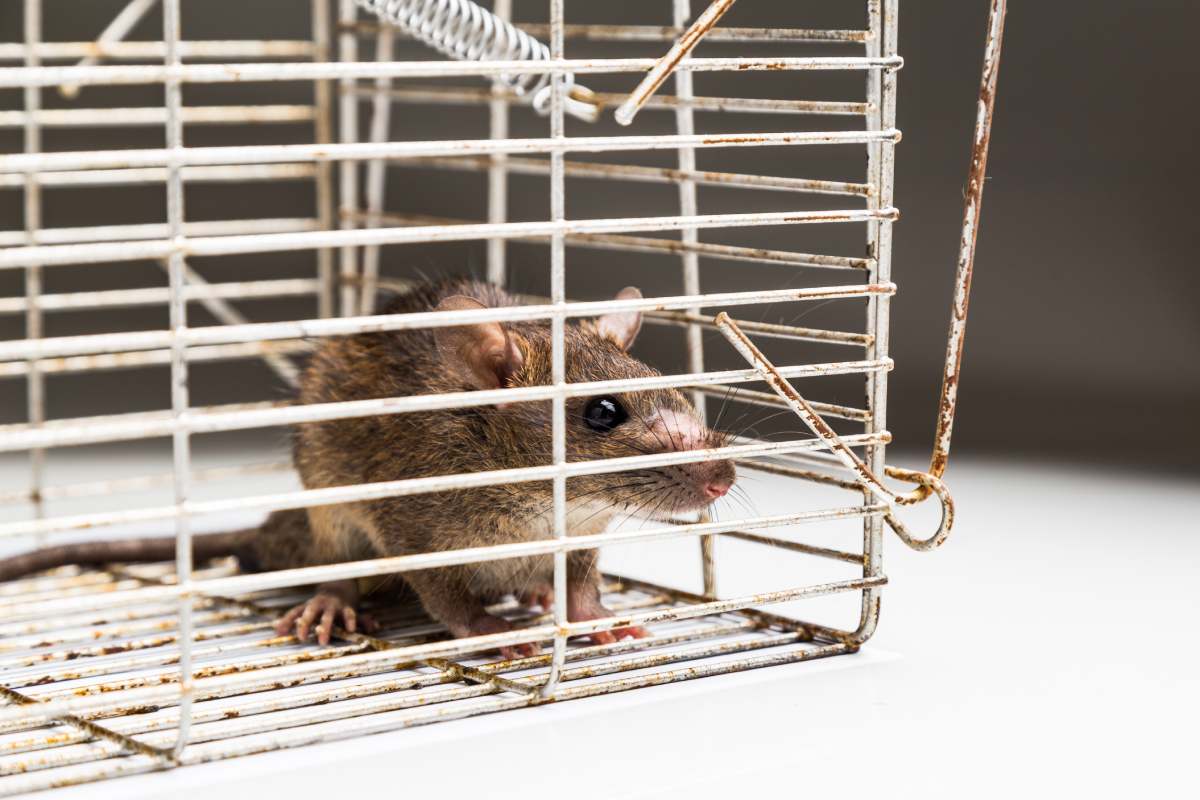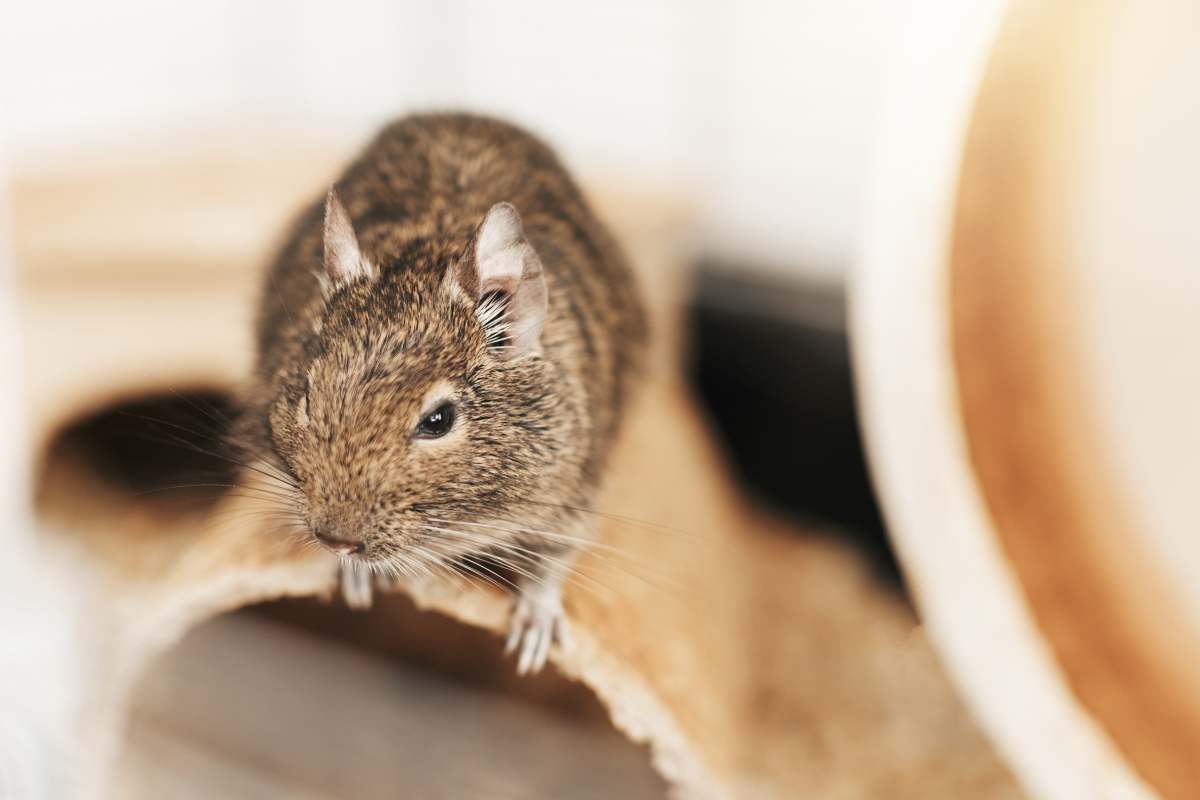What Attracts Mice and Rats? Can I Get Rid of Rats Myself?
Rats and mice can be more than just a nuisance; they pose significant health risks and can cause considerable damage to homes and businesses.
Understanding what attracts these pests and how to effectively manage and eliminate them is crucial for maintaining a safe and healthy environment. While many people attempt to handle rodent infestations on their own, the complexity and persistence of these pests often require professional intervention.
This article explores the key attractants for mice and rats, offers practical advice for DIY extermination, and outlines the expert processes involved in professional rat control to provide a comprehensive guide to tackling these common invaders.
What Attracts Mice and Rats?
Mice and rats are small rodents that often find their way into homes and businesses, causing various problems. Understanding what attracts these pests can help prevent infestations. Here are the main factors that attract mice and rats:
1. Food Sources
Mice and rats are opportunistic feeders, meaning they eat whatever they can find. They are particularly attracted to:
- Leftover Food: Any food left out, whether on countertops, in pet bowls, or in the trash, can attract rodents.
- Pantry Items: Unsealed food containers and bags are easy targets for these pests.
- Pet Food: Food meant for pets, if not stored properly, can also lure rodents.
2. Shelter
Mice and rats seek shelter to protect themselves from predators and harsh weather. They look for places that provide warmth, safety, and easy access to food. Common shelter spots include:
- Cluttered Areas: Piles of clutter, whether in garages, basements, or attics, provide excellent hiding spots.
- Unused Furniture: Old couches, chairs, and other furniture items can serve as nests.
- Wall Voids and Attics: Rodents can squeeze through tiny openings to enter walls or attics, where they build nests.

3. Water Sources
Just like any other living creatures, mice and rats need water to survive. They are attracted to:
- Leaky Pipes: Even a small leak can provide enough water for rodents.
- Pet Water Bowls: Always having water available for pets can also attract mice and rats.
- Standing Water: Puddles, buckets, or any containers holding water can be a draw.
4. Easy Access
Mice and rats can enter homes through very small openings. They are attracted to buildings where they can easily get inside. Common entry points include:
- Gaps and Cracks: Any cracks in walls, foundations, or around windows and doors can serve as entry points.
- Vents and Pipes: Rodents can squeeze through vents, pipes, and other small openings.
- Open Doors and Windows: If doors or windows are left open, especially at night, mice and rats can easily enter.
5. Outdoor Attractants
Certain outdoor elements can also attract mice and rats to your home:
- Bird Feeders: Spilled birdseed is a tasty treat for rodents.
- Trash Cans: Unsecured trash cans with leftover food can lure these pests.
- Gardens: Fruit and vegetable gardens, especially if not harvested regularly, can attract rodents looking for a meal.
6. Nesting Materials
Mice and rats gather materials to build their nests. They are attracted to places where they can find:
- Paper and Fabric: Newspapers, cardboard, old clothes, and similar materials are perfect for nest-building.
- Insulation: Rodents often use insulation from walls or attics to create warm nests.
- Yard Debris: Leaves, grass clippings, and other yard waste can also be used for nests.
Prevention Tips
To prevent attracting mice and rats, consider these steps:
- Keep Food Sealed: Store food in airtight containers and clean up spills promptly.
- Declutter Regularly: Reduce clutter in your home to eliminate hiding spots.
- Fix Leaks: Repair any leaky pipes or fixtures to remove water sources.
- Seal Entry Points: Close off any gaps, cracks, or holes that might serve as entry points. If the cracks and holes are severe, you might need to renovate your kitchen.
- Secure Trash: Use trash cans with tight-fitting lids and dispose of food waste properly.
- Maintain Your Yard: Keep your yard clean and free of debris to reduce outdoor attractants.
Can I Exterminate Mice and Rats Myself?
Yes, you can exterminate mice and rats yourself, but it requires careful planning and the right tools. Here’s a step-by-step guide to help you tackle the problem effectively:
1. Identify the Problem
First, determine the extent of the infestation. Look for common signs such as:
- Droppings: Small, dark, pellet-shaped droppings are a clear indicator.
- Gnaw Marks: Mice and rats chew on wires, wood, and other materials.
- Nests: Rodents build nests from shredded paper, fabric, and other soft materials.
- Noises: Scratching or squeaking sounds, especially at night, can indicate their presence.
- Footprints: Look for tiny footprints or tail marks in dusty areas.
2. Seal Entry Points
Prevent more rodents from entering by sealing their entry points:
- Inspect Your Home: Check for gaps, cracks, and holes in walls, foundations, and around doors and windows.
- Use Steel Wool: Fill small holes with steel wool, which rodents can’t chew through.
- Seal Larger Gaps: Use caulk, cement, or metal mesh to close larger openings.
- Check Vents and Pipes: Ensure vents are covered with mesh and gaps around pipes are sealed.
3. Remove Food and Water Sources
Make your home less attractive to rodents:
- Store Food Properly: Keep food in airtight containers and clean up crumbs and spills.
- Secure Garbage: Use trash cans with tight-fitting lids and empty them regularly.
- Fix Leaks: Repair any leaky pipes and avoid leaving standing water.
- Pet Food: Store pet food securely and remove uneaten food promptly.

4. Set Traps
Traps are an effective way to catch and kill rodents. There are several types to choose from:
- Snap Traps: These are the most common and kill rodents quickly.
- Glue Traps: These traps capture rodents alive but can be less humane as they cause prolonged suffering.
- Live Traps: These traps catch rodents without killing them, allowing for release far from your home.
- Electronic Traps: These deliver a quick, lethal electric shock to the rodent.
Tips for Using Traps:
- Bait: Use attractive bait such as peanut butter, cheese, or dried fruit.
- Placement: Place traps along walls, behind furniture, and in other areas where you’ve seen signs of rodents.
- Check Regularly: Check traps daily and dispose of captured rodents promptly.
5. Use Rodenticides (With Caution)
Rodenticides are poison baits that can kill rodents. However, they should be used with caution due to potential risks:
- Safety: Keep rodenticides out of reach of children and pets.
- Follow Instructions: Use according to the manufacturer’s instructions to ensure effectiveness and safety.
- Secondary Poisoning: Be aware that other animals may be poisoned if they eat a rodent that has ingested rodenticide.
6. Maintain Cleanliness
Keeping your home clean and clutter-free helps prevent future infestations:
- Regular Cleaning: Sweep, mop, and vacuum regularly to remove food particles.
- Declutter: Keep areas like basements, attics, and garages organized and free of excess clutter.
- Outdoor Maintenance: Keep your yard clean, trim bushes and trees, and remove any potential nesting sites.
7. Consider Professional Help
If your efforts don’t seem to be working, or if the infestation is severe, it may be time to call in SWAT Pest Control. They are professionals with access to more effective tools and techniques and can address the problem more efficiently.
What Are the Processes of Expert Rat Controls?
Professional rat control involves a systematic and thorough approach to effectively remove and prevent rat infestations. Here are the main processes that experts follow:
1. Inspection and Assessment
The first step in professional rat control is a comprehensive inspection and assessment of the property:
- Identify Infestation Sites: Experts look for signs of rat activity, such as droppings, gnaw marks, nests, and tracks.
- Determine Entry Points: They inspect the exterior and interior of the building to find where rats are entering.
- Assess Damage: They assess any damage caused by rats, including chewed wires, insulation, and structural components.
- Evaluate Attractants: They identify food, water, and shelter sources that may attract rats.
2. Develop a Customized Plan
Based on the inspection, professionals develop a tailored pest control plan:

- Targeted Strategy: They create a strategy that addresses the specific needs of the property, considering the extent of the infestation and the layout of the building.
- Selection of Methods: They choose the most effective and appropriate methods for trapping, baiting, and exclusion.
3. Exclusion
Exclusion involves sealing off entry points to prevent rats from entering the building:
- Seal Cracks and Holes: Professionals use materials such as caulk, steel wool, and metal mesh to seal gaps and holes in walls, foundations, roofs, and around pipes and vents.
- Install Door Sweeps and Screens: They may install door sweeps and screens on windows and vents to further block entry points.
- Repair Structural Issues: They address any structural issues that may allow rats to enter, such as damaged roofs or siding.
4. Trapping
Trapping is a key method for removing rats from the property:
- Place Traps Strategically: Professionals place traps in areas with high rat activity, such as along walls, in attics, and near food sources.
- Use Various Trap Types: They use a combination of snap traps, electronic traps, and live traps to effectively capture rats.
- Regular Monitoring: They regularly check and reset traps, ensuring captured rats are removed promptly and traps remain effective.
5. Baiting
Baiting involves the use of rodenticides to eliminate rats:
- Safe Placement: Professionals place bait in tamper-resistant bait stations to prevent accidental ingestion by non-target animals and humans.
- Follow Regulations: They adhere to local regulations and guidelines for the use of rodenticides, ensuring safe and responsible application.
- Monitor Bait Stations: They regularly check bait stations and replenish bait as needed.
6. Sanitation and Habitat Modification
Improving sanitation and modifying the habitat helps make the property less attractive to rats:
- Remove Food Sources: Professionals advise on proper food storage, waste management, and cleaning practices to eliminate food sources.
- Eliminate Water Sources: They identify and address sources of standing water, leaks, and condensation.
- Reduce Clutter: They recommend reducing clutter in and around the property to eliminate potential nesting sites.
7. Follow-Up and Monitoring
Ongoing monitoring and follow-up are essential to ensure the success of the rat control program:
- Regular Inspections: Professionals conduct regular follow-up inspections to check for signs of renewed rat activity.
- Adjust Control Methods: They adjust control methods as needed based on monitoring results.
- Long-Term Prevention: They provide recommendations for long-term prevention, such as maintaining exclusion measures and continued sanitation practices.
8. Documentation and Reporting
Professionals keep detailed records of the rat control process:
- Inspection Reports: They document findings from the initial inspection and any subsequent inspections.
- Treatment Records: They keep records of all treatments performed, including the types and locations of traps and bait stations used.
- Recommendations: They provide written recommendations for preventing future infestations.
Conclusion
Dealing with mice and rats requires a multi-faceted approach that includes understanding their attractants, implementing DIY strategies, and knowing when to seek professional help.
While taking initial steps yourself can be effective in managing minor infestations, severe or persistent problems often necessitate the expertise of pest control professionals.
Their systematic methods, from thorough inspections and targeted trapping to exclusion techniques and ongoing monitoring, ensure not only the elimination of current infestations but also the prevention of future ones.



